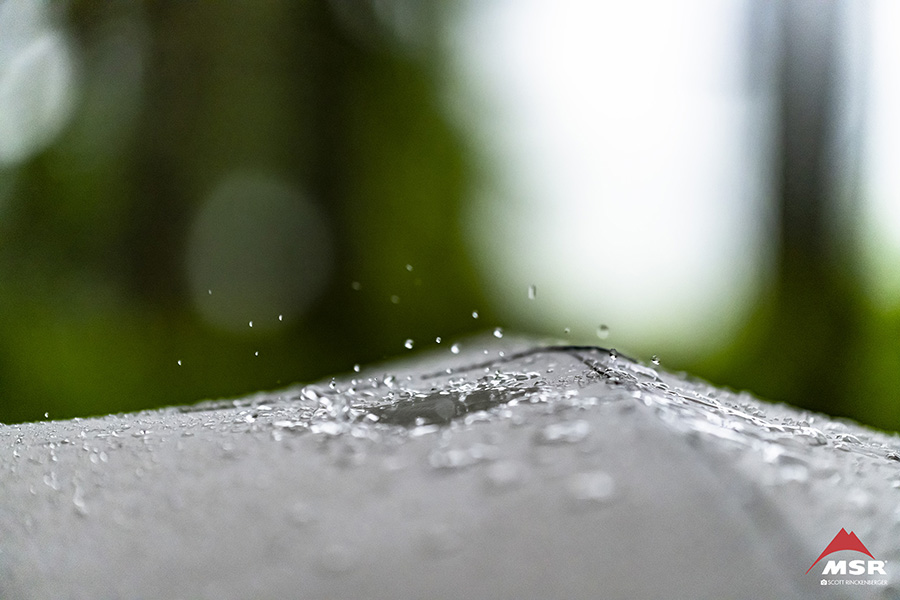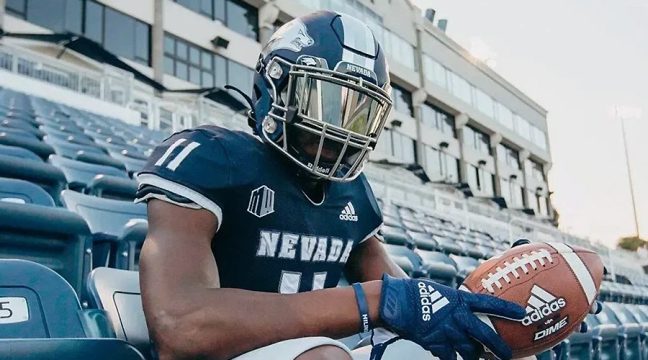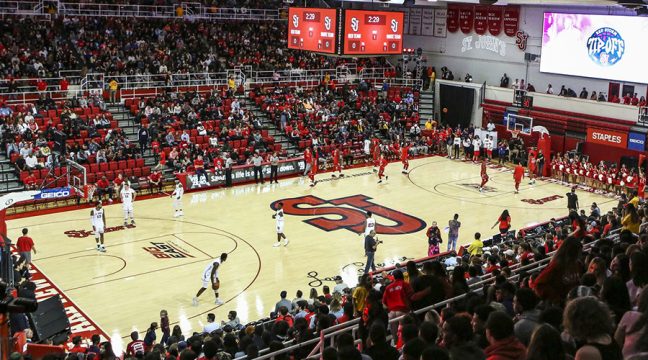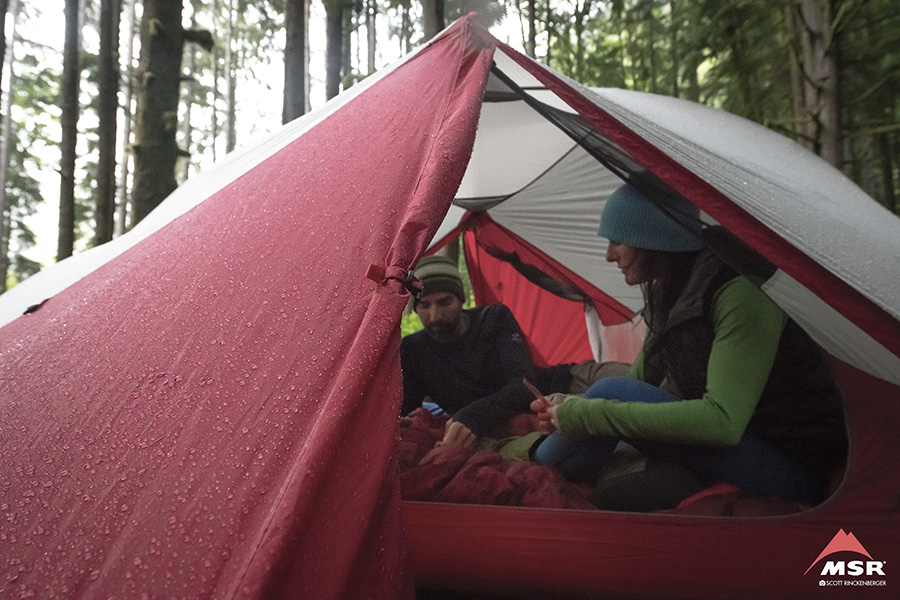
<span style="color: #5e5b5b;">We’ve all had this happen to us. We’re on a camping trip and the tent starts to leak, or you wake up in the morning to the sound of dripping water and a semi-soaked tent. Over time, moisture starts to chemically break down waterproof coatings and, generally, each type of material usually requires a coating and seam sealer formulated specifically for that fabric.
Ten years ago, MSR identified a unique coating that was not used in the outdoor industry. They reached out to different industries to find a coating that could be applied using the brand’s current production process and one that would hold up to temperature, humidity and abuse if stored incorrectly and not break down. As a result MSR developed Xtreme Shield, a combination of coating and stitching that will extend the waterproofness of a tent three times longer than before.
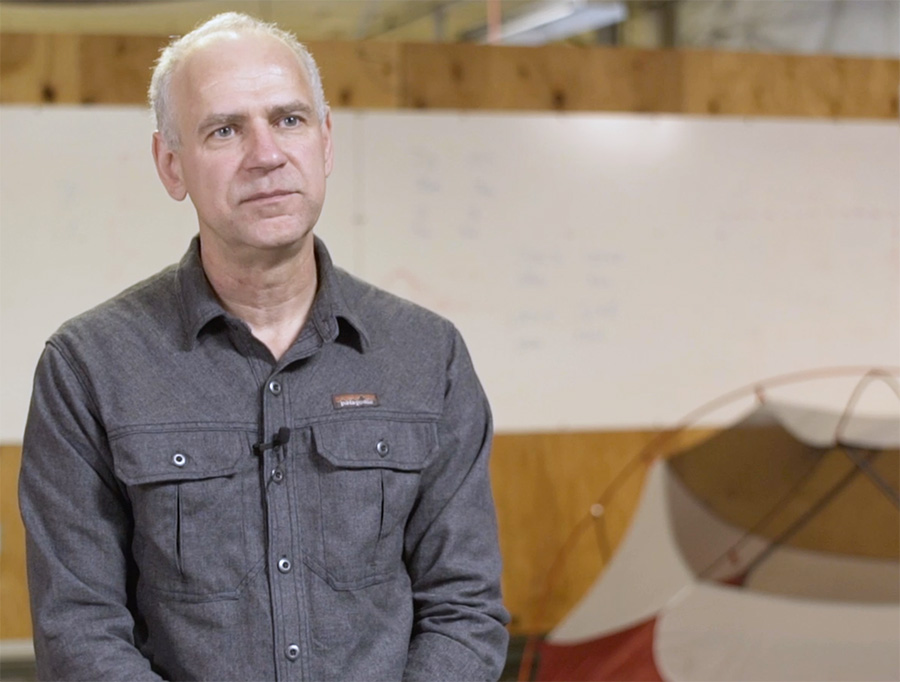 On November 20, REI and MEC in Canada will offer MSR’s best-selling, award-winning backpack tent series, the Hubba NX, with Xtreme Shield.
On November 20, REI and MEC in Canada will offer MSR’s best-selling, award-winning backpack tent series, the Hubba NX, with Xtreme Shield.
Last week we spoke with Terry Breaux, pictured left, category Manager and designer for tents at MSR, to learn more.
When and why did MSR start the R&D behind Xtreme Shield? Around 12 years ago we identified the waterproof coating that made our tents waterproof and that we were using at that time. Back then our main market was the U.S. and Canada. For most of our customers, the coating was doing a great job, but a small percentage of customers who used the tents in hot and humid conditions found that the tents were falling apart prematurely.
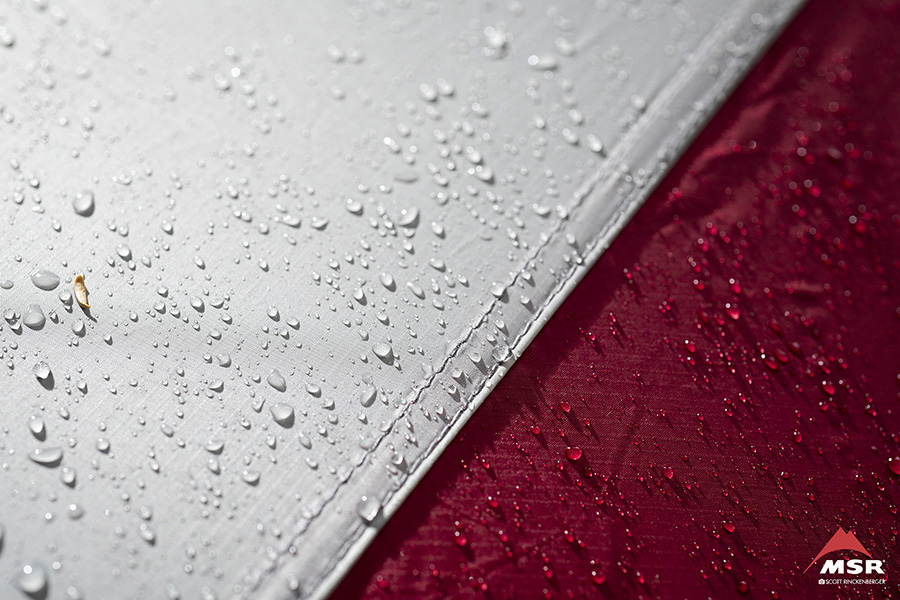 Ten years ago, we identified a unique coating that had not been used in the outdoor industry. We reached out to different industries to find a similar coating that could be applied to our tents using our current production process but also a coating that could hold up to temperature, humidity and abuse if stored incorrectly. We had challenges in our supply chain getting the factories to be willing to use the new application on the fabric. When we did, it was a big investment on their part.
Ten years ago, we identified a unique coating that had not been used in the outdoor industry. We reached out to different industries to find a similar coating that could be applied to our tents using our current production process but also a coating that could hold up to temperature, humidity and abuse if stored incorrectly. We had challenges in our supply chain getting the factories to be willing to use the new application on the fabric. When we did, it was a big investment on their part.
Fast forward about five years. Our Asian market was growing. Most warehouses there do not have climate control storage. There were instances where brand-new tents were going bad even before they reached the customer. At that time, the tent market was taking off, and we really pushed our suppliers and coaters to take a chance with us to develop Xtreme Shield. We borrowed the technology from other industries that require really durable, polyurethane coatings that can hold up to heat, humidity and abuse.
Why were the tents falling apart? There is a lot of speculation about what it is that was causing the fabric to prematurely degrade; possibly the coatings were migrating into one another, but we could never prove that in the lab or the factories we work with. But it is a fact that the thinner fabrics tend to degrade quicker than the heavier weights used in the 90s. That is what forced us to come up with a solution where degrading would not occur regardless of the conditions our tents are stored. As a result, our tents do not have seam tapes. We went back to a tried-and-true technology of using a poly/cotton thread that when it gets wet, the thread seals up and seals the stitching hole so the tent stays dry and watertight.
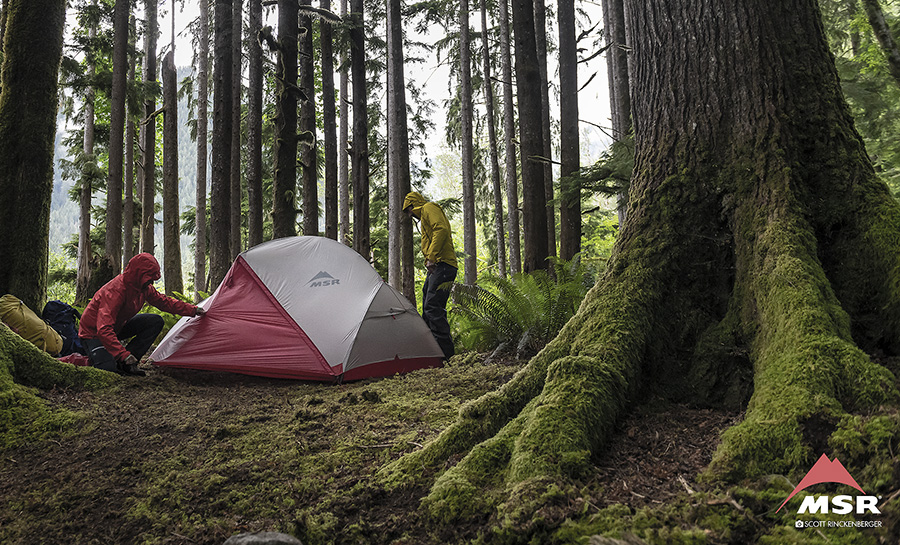
How confident are you that Xtreme Shield makes a better tent? We are 100-percent confident that our tents with Xtreme Shield make a much better tent and will last up to three-times longer than the standard tent.
Is the formula proprietary? One supplier knows the formulation and how to work with it. We have an exclusive not to open it up to anyone else until 2021.
This is an exciting time for MSR. Yes, after 10 years working in the research and development phase, we can finally offer it to customers. It is a material we identified with a long time ago, and it came together to allow us to put it into production.
As an industry veteran in the tent category, what makes a great tent? It comes down to the details and how to get the weakest point to match up to everything else. When you are able to do that, you can have a really lightweight product that’s durable enough to hold up over years and in the conditions it would be expected to be used in.

Are the chemicals used to make the product safe for people and the environment? When it comes to sustainability, the outdoor industry—not just MSR—is the leader in using the best compounds available. By law, to sell a tent in the U.S. and Canada, it has to pass a flame test. What we’ve seen over the years is our industry has been recognizing better flame retardants that will allow us to pass the test and we use those. We also work very closely with our suppliers to only put just enough chemical compounds to meet the requirement.
MSR takes that one step further. In markets that do not require flame retardants, we don’t put it in there. Our European market is not required to have the flame retardants, so our European-specific models don’t have it. We are always looking to find a balance between safety and putting more chemicals in the environment and exposing our customers to it. We’re working hard, like many of the outdoor companies out there, to manufacture a product that is sustainable while meeting all of the necessary requirements.
MSR’s goal is to make less tents. If our customer’s tent lasts them three times as long, that’s two other tents they don’t need to buy over the course of that same period. We want to make our treatments better, but we also want our customers to have a tent that lasts longer. From a sustainability perspective, we are producing less stuff with the Xtreme Shield coating on it.
The Hubba NX Backpacking Tents are one of MSR’s best-selling series in the Outdoor industry. The Xtreme Shield system is huge and exciting for us, and we can’t wait to bring this to customers.
Photos courtesy MSR
Written by Teresa Hartford
teresa@sportsonesource.com

